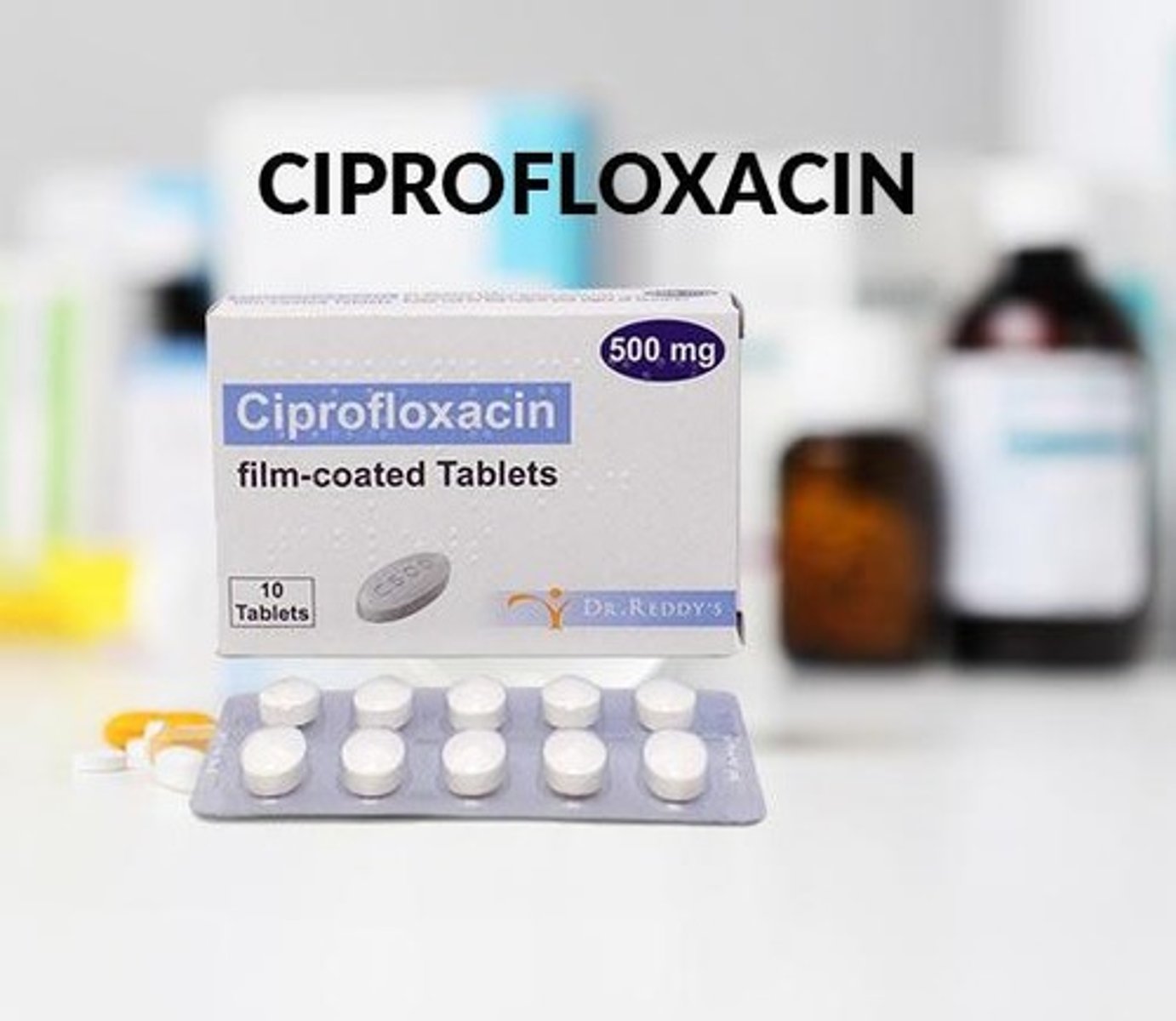Pharmacology of Antibacterials: Penicillins, Cephalosporins, Macrolides, Fluoroquinolones, and More
1/63
There's no tags or description
Looks like no tags are added yet.
Name | Mastery | Learn | Test | Matching | Spaced |
|---|
No study sessions yet.
64 Terms
Penicillin's
Includes amoxicillin (Amoxil) and amoxicillin/clavulanic acid (Augmentin).
Therapeutic Use of Amoxicillin
Treats broad-spectrum infections caused by gram-positive cocci and bacilli (ear and throat infections and UTIs)
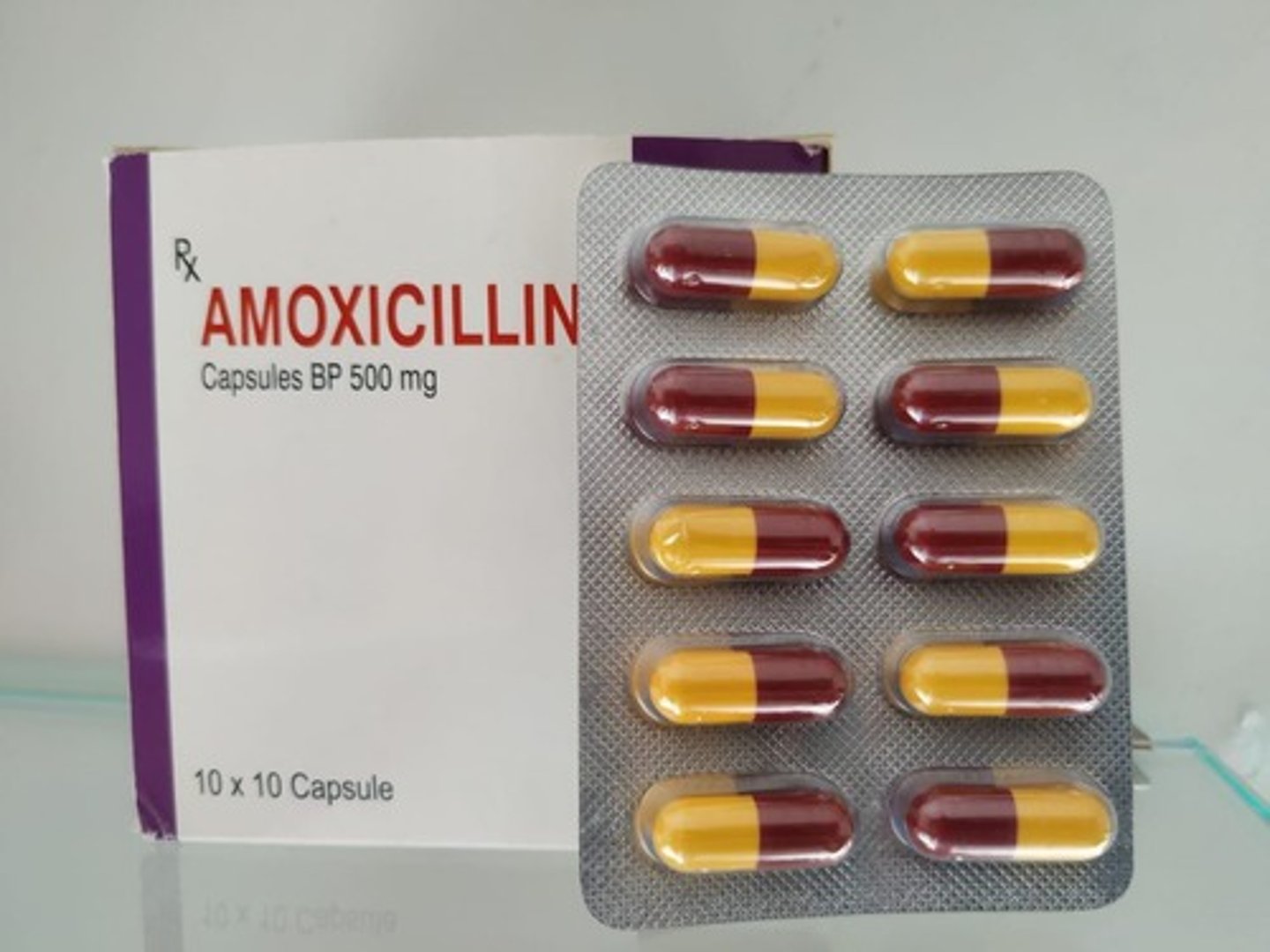
Amoxicillin for Gonorrhea
Treats gonorrhea caused by non-penicillinase-producing bacteria.
Clavulanic Acid
Increases spectrum of disorders treated by amoxicillin and its ability to kill bacteria.
Adverse Drug Reactions of Amoxicillin
GI symptoms: diarrhea, nausea, vomiting; may cause Clostridium difficile superinfection; superinfection with Candida albicans; allergy to penicillin.
Interventions for Amoxicillin
Monitor for GI symptoms, bloody stools, long-term watery diarrhea, and Candida infections; ask about allergies prior to administration.
Monitoring After Injectable Penicillin
Keep client in facility for 30 min after administration and monitor for allergy.
Client Instructions for Amoxicillin
Report watery or bloody diarrhea, take drug at the start of meals, report mouth pain or inability to eat, report vaginal burning, itching, and discharge.
Contraindications for Amoxicillin
Allergy to penicillin's, hypersensitivity to procaine and benzathine.
Precautions for Amoxicillin
Renal impairment may need reduced dose.
Interactions with Amoxicillin
Probenecid increases penicillin blood levels; bacteriostatic agents may decrease therapeutic effects; reduced effectiveness of oral contraceptives.
First-generation Cephalosporins
Includes cephalexin (Keflex), treats infections caused by gram-positive cocci.
Subsequent Generations of Cephalosporins
More active against gram-negative bacteria, more resistant to beta-lactamase bacteria, more able to penetrate cerebrospinal fluid.
Adverse Drug Reactions of Cephalexin
GI symptoms: diarrhea and nausea; rare Clostridium difficile-associated diarrhea; possible cross-allergy to penicillin; risk for hemorrhage with cefotetan.
Interventions for Cephalexin
Monitor and report bloody stools or watery diarrhea; assess for allergies; prepare to treat rash/hives and anaphylaxis; monitor prothrombin and bleeding time.
Disulfiram-like Reaction with Cefotetan
Occurs if client takes cefotetan with alcohol.
Administration of Cephalexin
Available as capsules, tablets, or oral suspension; differentiate between cephalosporin prescriptions.
Thrombophlebitis
Risk associated with cephalosporins infused via IV.
Vitamin K Administration
Expect to administer vitamin K if bleeding occurs.
Monitoring for Thrombophlebitis
Monitor during IV infusion; stop infusion and change IV site if it occurs.
Dilution of IV Cephalosporins
Follow recommendations when diluting; infuse slowly.
Client Information on Disulfiram-like Reaction
Inform client that a disulfiram-like reaction will occur with the combination of the drug and alcohol.
Cephalosporin
A class of antibiotics that require careful differentiation due to similar generic names.
Client Instructions for Cephalosporins
Take with food to decrease GI symptoms; report watery or bloody diarrhea; stop drug and notify provider for allergic reactions; call 911 for difficulty breathing; report unusual bruising or bleeding
Cephalosporin Contraindications
Allergy to cephalosporin antibiotics; allergy to penicillin; carnitine deficiency or milk protein allergy (for cefditoren only); any alcohol use causing a disulfiram-like reaction (for cefotetan only).
Cephalosporin Precautions
Renal failure; GI disease.
Cephalosporin Interactions
Probenecid causes prolonged effect; alcohol or any drug that promotes bleeding (for cefotetan only); IV calcium and ceftriaxone (for ceftriaxone only).
Carbapenems
A class of antibiotics including imipenem (Primaxin) used to treat serious infections caused by multiple types of organisms.
Adverse Drug Reactions of Carbapenems
GI symptoms like nausea and vomiting; thrombophlebitis at IV site; possible cross-sensitivity with other antibiotics with beta-lactam ring; superinfection.
Carbapenems Interventions
Follow recommendation rate for IV infusion; monitor for nausea; monitor IV site for redness and swelling; assess for antibiotic allergy; monitor for secondary infections; lab testing includes AST, BUN, LDH, bilirubin, and creatinine.
Carbapenems Administration
Only available for IM or IV use; IM and IV forms are not interchangeable.
Client Instructions for Carbapenems
Report nausea during IV infusion; report pain, swelling, or redness at IV site; report all drug allergies; report mouth pain and difficulty chewing; report vaginal irritation and discharge.
Carbapenems Contraindications
Allergy to carbapenems; allergy to penicillin.
Carbapenems Precautions
Allergy to cephalosporins; seizures; renal impairment.
Vancomycin
An antibiotic used for severe infections, including MRSA and C. difficile-associated diarrhea.
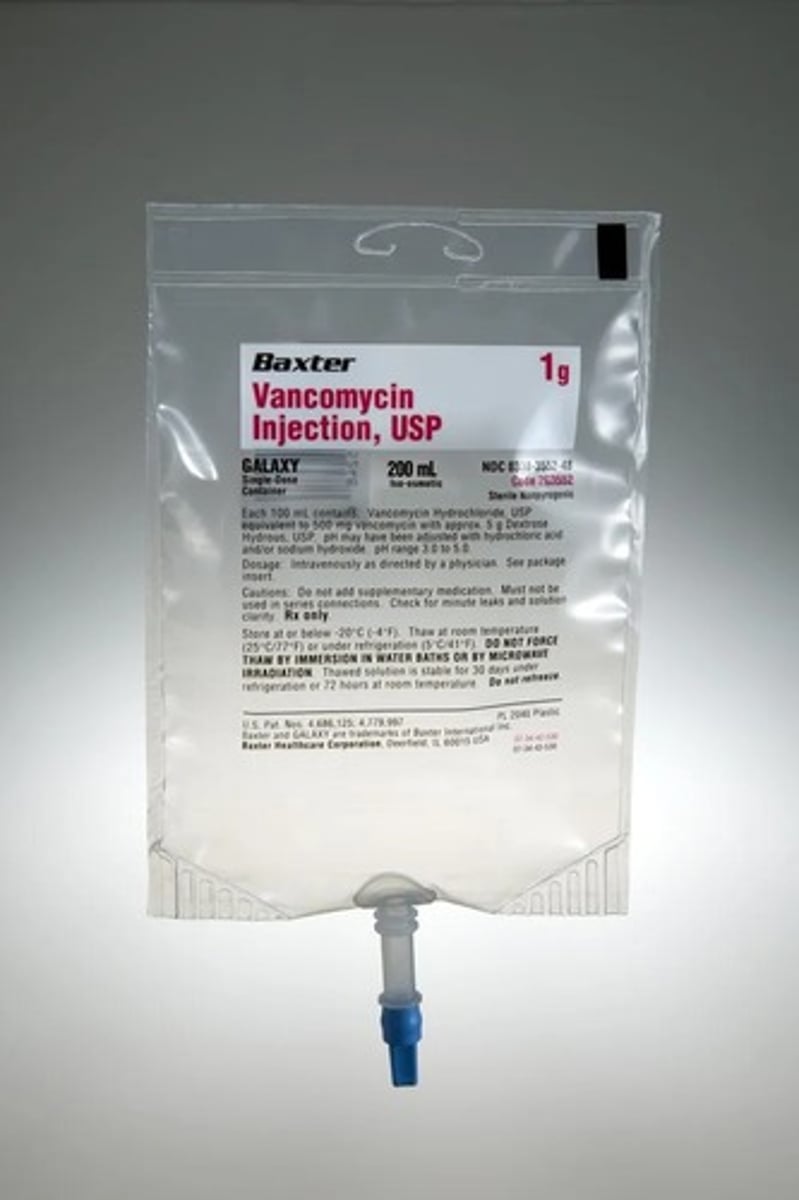
Adverse Drug Reactions of Vancomycin
Renal failure due to nephrotoxicity; hypotension, tachycardia, and flushing (red man syndrome) with rapid IV infusion; rare ototoxicity; thrombophlebitis at IV site.
Vancomycin Interventions
Administer over 1 hr by IV infusion; monitor vital signs; monitor vancomycin trough levels; monitor BUN and creatinine levels; assess IV infusion for redness and swelling.
Vancomycin Administration
Give orally for C. diff infections; give IV for all other infections; administer slowly IV and follow dilution recommendations.
Client Instructions for Vancomycin
Report flushing and faintness during IV infusion; report tinnitus or perceived hearing loss; report changes in urine output; report pain, swelling, and redness at IV site; report vertigo.
Vancomycin Contraindications
Allergy to vancomycin; hypersensitivity.
Vancomycin Precautions
Renal insufficiency (reduce dosage); impaired hearing; colitis.
Vancomycin Interactions
Drugs toxic to hearing or kidney increase the risk for ototoxicity or nephrotoxicity.
Tetracyclines
Includes tetracycline, doxycycline, minocycline.
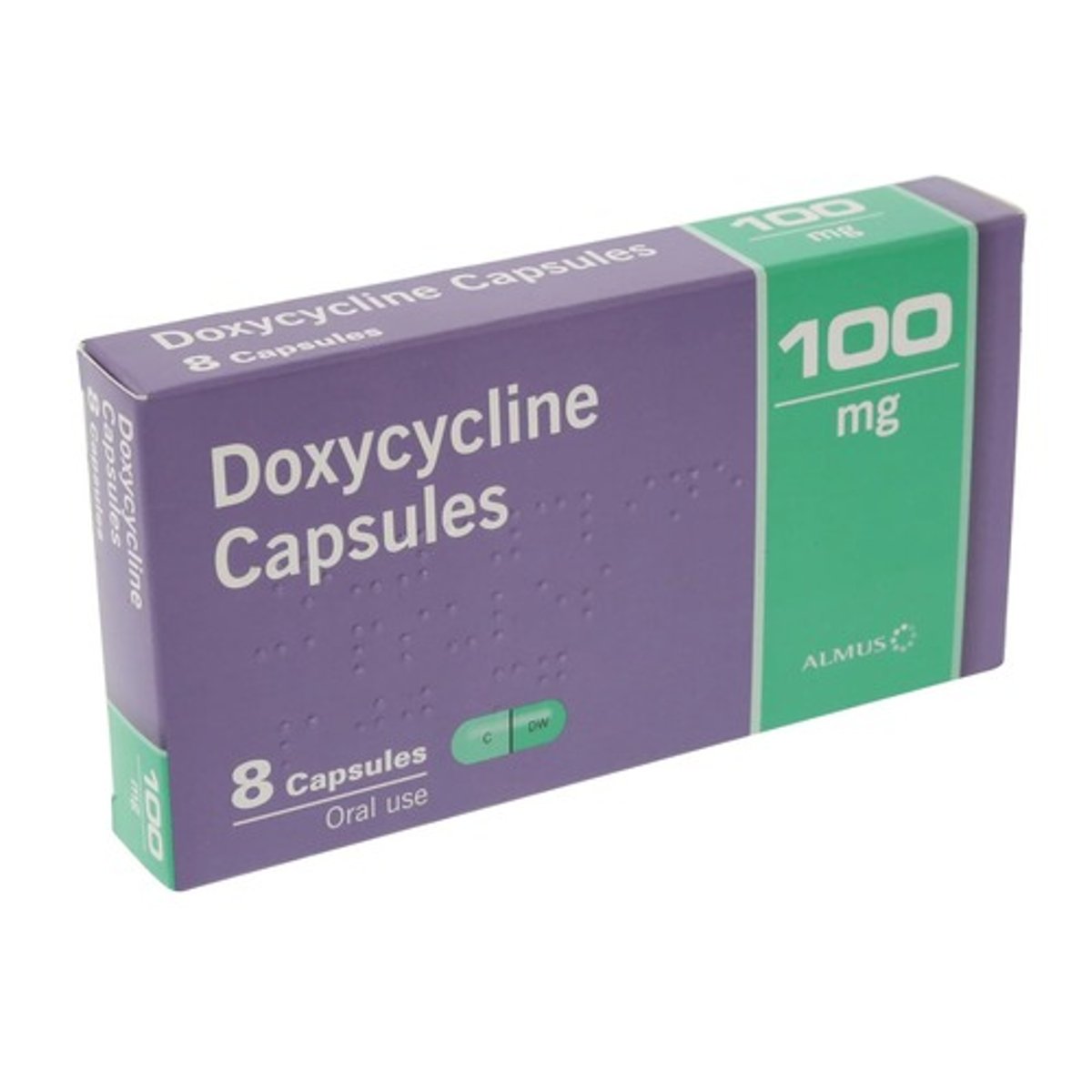
Therapeutic Use of Tetracyclines
First-choice antibiotic for Chlamydia infections, Mycoplasmal infections, Rickettsial infections (typhus), Syphilis and gram-negative infections in clients with penicillin allergy, Gram-positive infections (tetanus), Cholera, Anthrax, and treats acne vulgaris (topical and oral forms).
Adverse Drug Reactions of Tetracyclines
GI symptoms: nausea, vomiting, diarrhea, ab pain; Hepatotoxicity (large doses or to pregnant/postpartum women); Superinfections (C. diff, Candida infections); Photosensitivity; Suppression of long-bone growth in premature infants.
Interventions for Tetracyclines
Give with non-dairy foods if symptoms occur; Monitor and report GI symptoms; not safe for pregnancy; Monitor for symptoms of liver damage, superinfections, skin reactions, lymphadenopathy and facial swelling.
Administration of Tetracyclines
Give orally on an empty stomach 1 hr before or 2 hr after meals; give with non-dairy food ; Do not give right before bedtime; Topical form treats acne vulgaris; IM and IV tetracycline are given only if oral form cannot be tolerated by client; Shake solution well
Client Instructions for Tetracyclines
Take with non-dairy foods if GI symptoms occur, Report to provider if pregnant; Report jaundice, abdominal pain, or fatigue; Report mouth pain, dysphagia, vaginal irritation/discharge, watery or bloody stools; photosensitivity
Contraindications for Tetracyclines
Pregnancy risk - teratogenic; Allergy to tetracycline; Exposure to ultraviolet light; Serious renal or liver failure; History of liver or kidney disorder.
Interactions with Tetracyclines
Absorption decreased by antidiarrheals containing kaolin; supplements and antacids containing calcium, magnesium, or aluminum; Dairy products and supplements with iron or zinc decrease absorption; Tetracyclines decrease effectiveness of oral contraceptives.
Macrolides
Includes erythromycin.
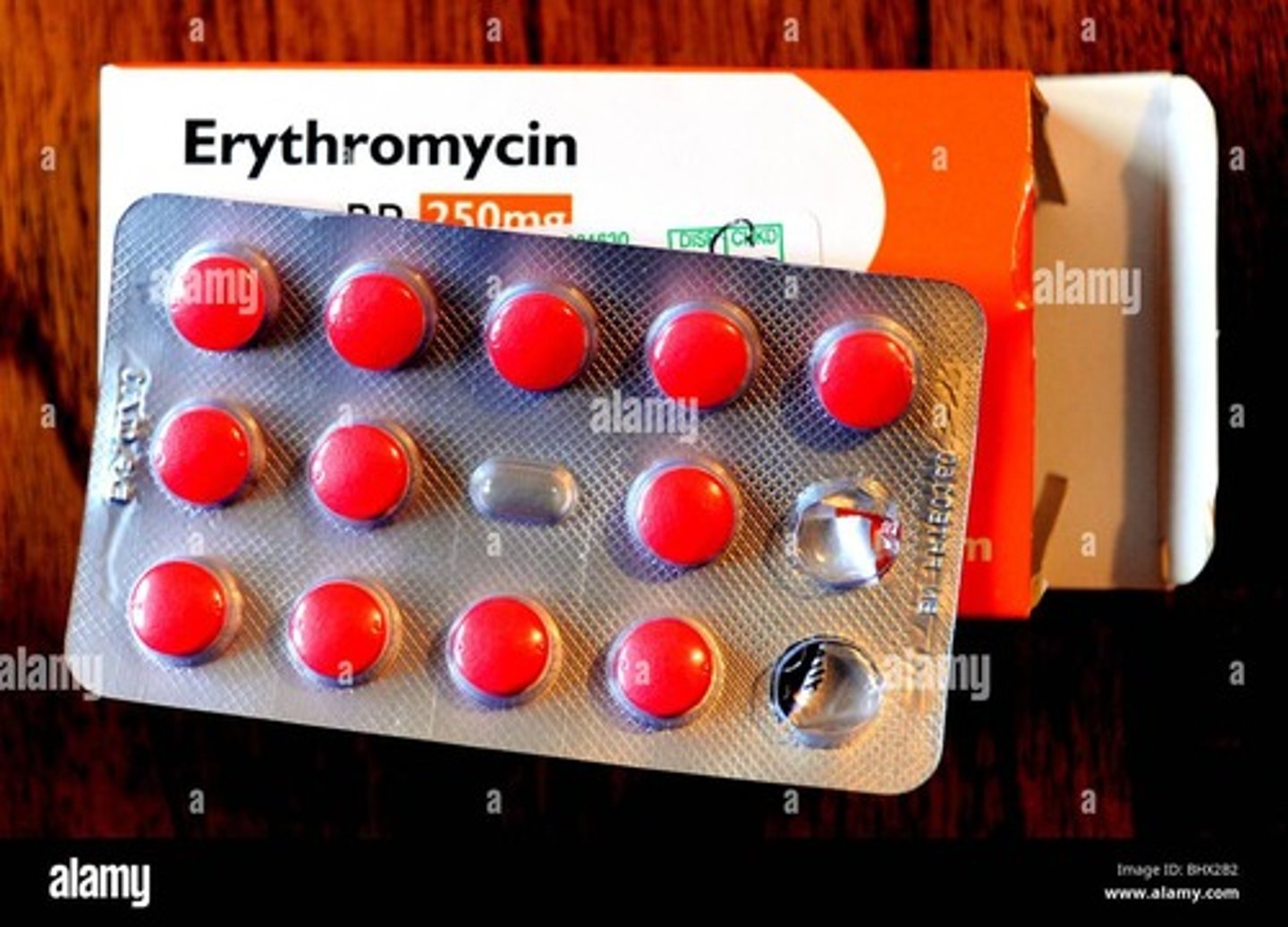
Therapeutic Use of Macrolides
First-line of treatment for Legionnaires' disease, Whooping cough, Acute diphtheria, diphtheria, Some Chlamydia infections, Certain pneumonias, Treats common infections for clients who have a penicillin allergy, Ophthalmic ointment prevents eye infections in neonates.
Adverse Drug Reactions of Macrolides
GI symptoms: nausea, vomiting, abdominal pain, and diarrhea; Cardiac symptoms: serious ventricular dysrhythmias can result in death; Ototoxicity: hearing loss, vertigo, and tinnitus (able to reverse when treatment ends); Superinfection (C. diff-associated diarrhea, candidiasis).
Interventions for Macrolides
Monitor for and report GI reactions (a decrease in the dose may stop symptoms); Question client about history of prolonged QT; Monitor for ototoxicity; Monitor for and report superinfection; Monitor liver function
Administration of Macrolides
Available in four forms: Erythromycin base: tablets, capsules, topical, and ophthalmic ointment; Erythromycin stearate: tablets; Erythromycin ethylsuccinate (EES): tablets; Erythromycin lactobionate: IV form; Give erythromycin base and erythromycin stearate on an empty stomach; If GI symptoms occur, may give with food; Give EES enteric-coated forms of erythromycin with or without meals.
IV form of macrolides
Follow dilution and rate recommendations to prevent thrombophlebitis.
CONTRAINDICATIONS of macrolides
Allergy to erythromycin or other macrolide antibiotic.
PRECAUTIONS for macrolides
Liver Disorders.
Interactions of Macrolides
Decreases blood levels of chloramphenicol and clindamycin antibiotics.
Aminoglycosides
Gentamicin.
THERAPEUTIC USE aminoglycosides
Gram-negative aerobic bacilli severe infections (all aminoglycosides).
ADVERSE DRUG REACTIONS aminoglycosides
Elevated trough levels of drug (early signs include tinnitus, headache, and vertigo) can cause ototoxicity.
INTERVENTIONS aminoglycosides
Monitor for and report tinnitus and other symptoms of early ototoxicity.
Fluoroquinolones
Ciprofloxacin (Cipro).
